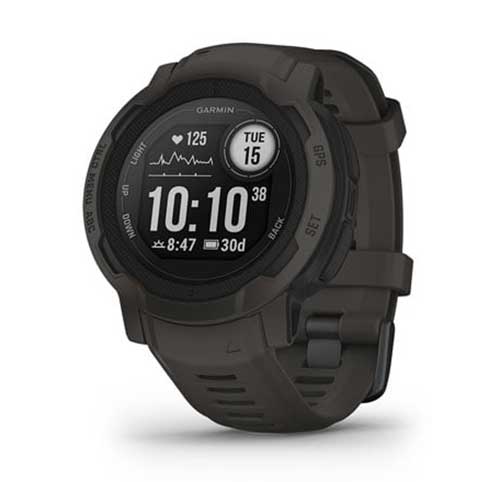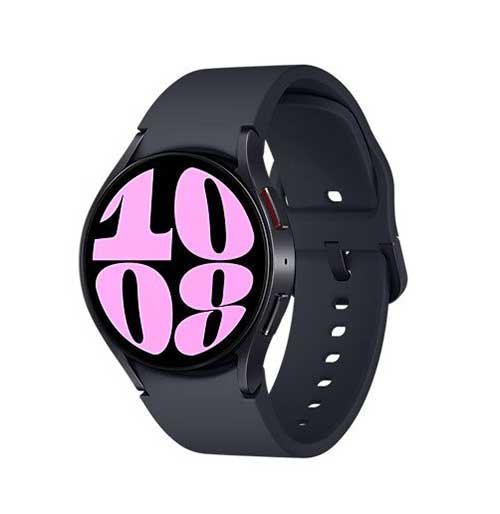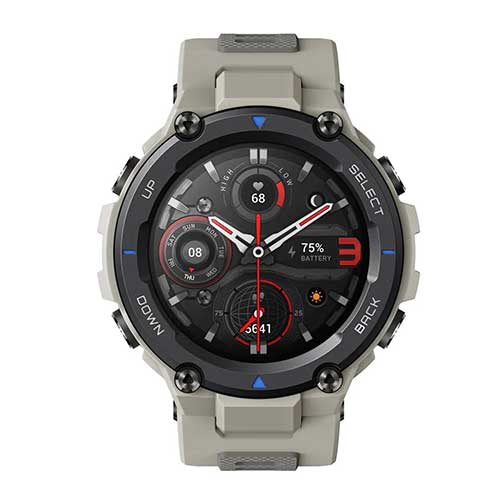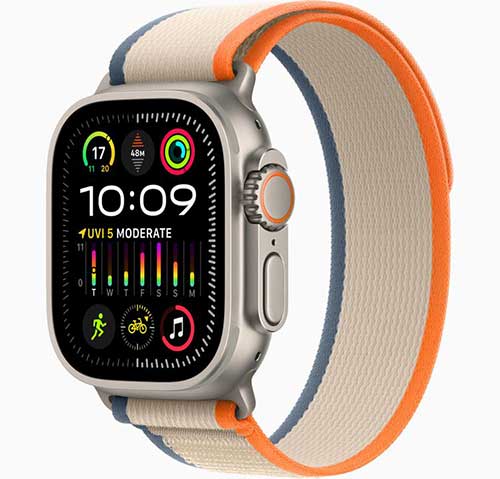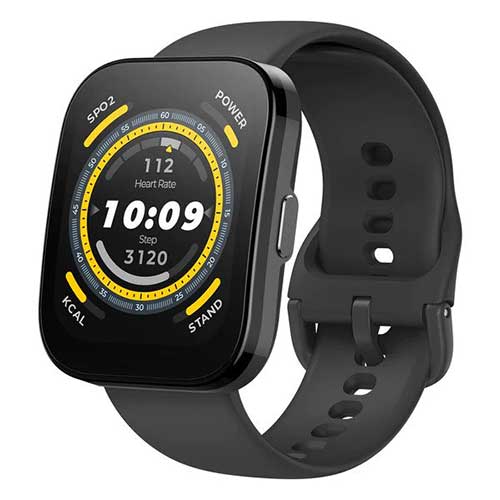In the rapidly evolving landscape of fitness technology, GPS tracking smartwatches have emerged as indispensable companions for individuals dedicated to enhancing their fitness journey. These cutting-edge wearables seamlessly blend style with functionality, offering countless features designed to enhance your exercise experience.
Understanding GPS Tracking in Smartwatches:
At the heart of this smartwatch is Global Positioning System (GPS) technology, a satellite-based navigation system that has transcended its traditional use to become a game changer in the world of fitness. GPS tracking in smartwatches allows users to accurately monitor their location, speed, and distance traveled in real-time, providing accuracy that goes beyond the capabilities of standard fitness trackers.
Relevance to Fitness Journey:
Accurate Activity Tracking: GPS tracking enables accurate tracking of outdoor activities like running, cycling, and hiking. Say goodbye to estimating distances or relying on generalized metrics – GPS-equipped smartwatches provide detailed information on your performance.
Route Mapping and Exploration: For those who love to explore new routes or conquer challenging terrain, GPS smartwatches offer the ability to map your routes. This not only adds an element of adventure to your fitness routine but also allows you to revisit your favorite routes and share them with fellow fitness enthusiasts.
Data-Driven Performance Metrics: Use the power of data to optimize your workouts. GPS-enabled smartwatches provide comprehensive performance metrics including speed, altitude, and split time. Analyzing this data empowers you to set and achieve more ambitious fitness goals.
Elevated training experience: Whether you are a seasoned athlete or just starting your fitness journey, GPS tracking smartwatches bring a new dimension to your training. Get real-time feedback on your pace and progress, helping you make informed adjustments to your workouts and ensuring continuous improvement.
Goal setting and motivation: Setting and achieving fitness goals becomes more engaging with the real-time tracking and goal-specific data provided by GPS smartwatches. Witnessing your accomplishments in detail acts as a powerful motivator, motivating you to reach new milestones.
What exactly is GPS tracking?
GPS tracking is a technique that employs a network of satellites to detect the precise location of an object or person on Earth. GPS tracking is used in smartwatches and other wearables to monitor and record a person’s geographic coordinates during various activities in the context of fitness technology.
Why is GPS tracking beneficial to fitness enthusiasts?
Accurate Distance Measurement:
Challenge Progress Monitoring: Knowing the actual distance is vital for runners, cyclists, and walkers when setting and accomplishing fitness objectives. GPS tracking eliminates the need for guesswork by providing precise measurements that allow users to track their development and push themselves to their limits.
Real-time Location Awareness:
Outdoor Activity Mapping: Outdoor activities such as hiking, trail running, and cycling are popular among fitness enthusiasts. Users can utilize GPS tracking to plot their routes in real-time, visually depicting their search. This feature is not only useful, but it also adds a sense of adventure to the workout regimen.
Data-driven Performance Analysis:
In-depth performance metrics: GPS-enabled smartwatches generate an enormous number of statistics, including speed, pace, altitude, and split times. This data goes beyond simple step counts to provide a full study of performance. These metrics can be used by fitness enthusiasts to adapt their training routines and discover areas for progress.
Enhanced Training and Goal Setting:
Real-time feedback: GPS tracking gives real-time data on variables such as speed and distance during exercises. Users may modify their intensity in real-time, ensuring they stay in their desired zone and get the most out of each session.
Goal visualization: With GPS tracking, setting and attaining exercise goals becomes more tangible. Users may examine their goals and celebrate their achievements using thorough tracking data, whether they are reaching a given distance or conquering difficult terrain.
Versatility in Activities:
Multi-Sport Capabilities: GPS tracking is not confined to a single type of activity. It supports a wide range of fitness activities such as running, cycling, swimming, and others. Because of this mobility, GPS-enabled smartwatches are appropriate for a wide spectrum of athletes and enthusiasts
Motivation and Accountability:
Personal challenges: The rich data offered by GPS tracking smartwatches makes fitness more gamified. Users can create distance, height, or speed challenges to increase the sense of competitiveness and motivation.
Social Sharing: Many GPS-enabled gadgets allow users to post their routes and accomplishments on social media platforms, forming a supportive group and adding an added degree of accountability.
In summary, GPS tracking is a transformative technology for fitness enthusiasts, offering accuracy, versatility, and motivation to enhance their training experience. As we explore the world of fitness technology, the integration of GPS tracking is a key component in empowering individuals to achieve their health and wellness goals
Role Of GPS In Enhancing The Overall Fitness Experience
The role of GPS (Global Positioning System) in enhancing the overall fitness experience is multifaceted, providing many benefits to individuals engaged in various physical activities. Here’s an overview of how GPS contributes to a richer and more effective fitness journey:
Accurate Activity Tracking
GPS technology delivers precise position data, allowing for accurate tracking of outdoor activities such as jogging, cycling, and hiking.
Users can accurately track their routes and distances, removing the need for guessing or human input.
Real-Time Performance Metrics
GPS-enabled fitness devices that provide real-time feedback on performance metrics such as pace, speed, and distance.
Athletes and fitness enthusiasts can instantly adjust their intensity based on these metrics, optimizing their workouts for better results.
Route Mapping and Exploration
GPS tracking allows users to map their routes in real-time by creating a visual representation of their outdoor activities.
Fitness enthusiasts can explore new routes, trails, or locations, adding an element of adventure and variety to their routine.
Outdoor Adventure Integration
For those involved in outdoor sports or adventure activities, GPS is essential for navigation and safety.
GPS-enabled smartwatches provide location awareness, helping users navigate through unfamiliar terrain and ensuring they stay on track.
Data-Driven Training Optimization
Detailed GPS data allows for comprehensive analysis of training sessions, helping users identify strengths, weaknesses, and areas for improvement.
Athletes can optimize their training regimens based on performance metrics, ensuring a more effective and targeted approach to fitness.
Features to Look for in GPS Tracking Smartwatches:
When buying a GPS tracking smartwatch, seek features that meet your personal needs and interests. The following are the main elements to consider:
Highly Accurate GPS:
Ascertain that the smartwatch features a dependable and accurate GPS module for precise location monitoring during activities.
Multi-constellation Support:
For better accuracy in extremely difficult circumstances, seek smartwatches that support multiple satellite constellations (e.g., GPS, GLONASS, Galileo).
Real-Time Tracking:
For activities like jogging or cycling, the ability to track your whereabouts in real time is critical. Real-time tracking gives you immediate feedback on your performance.
Offline Maps:
Some smartwatches allow you to download maps for offline use, which is useful for navigation in locations where connectivity is limited or non-existent.
Battery Life:
Consider battery life, especially if you use GPS frequently. The smartwatch’s long battery life ensures that it can support your activities throughout the day.
Smart Notifications:
Smartwatches with GPS capabilities frequently include notification services. Check that the watch can display alerts for calls, messages, and other smartphone notifications.
Compatibility:
Check to see if the smartwatch is compatible with the operating system of your smartphone (iOS or Android). Compatibility means that your existing devices work seamlessly together.
Water Resistance:
If you enjoy water-based activities, seek a smartwatch that is water-resistant. Check if it can resist the amount of water exposure anticipated during your activity.
Durability:
Consider the build quality and endurance of the smartwatch, especially if you intend to use it in harsh outdoor situations.
Ease of Use:
A pleasant experience requires a user-friendly interface. Make sure the smartwatch is simple to use and has intuitive functions.
Heart Rate Monitoring:
Built-in heart rate monitoring, in addition to GPS, adds an additional layer of fitness tracking, providing insight into your cardiovascular health.
Activity Tracking:
Look for smartwatches that include extensive activity tracking in addition to GPS, such as steps, calories, sleep, and other pertinent metrics.
Barometric Altimeter:
A barometric altimeter measures changes in elevation, providing more accurate data for activities like hiking and trail running.
Integration with Fitness Apps:
Check if the smartwatch integrates with popular fitness apps. Compatibility with platforms like Strava or MyFitnessPal can enhance your overall fitness tracking experience.
Automatic Workout Detection:
The feature automatically detects and starts tracking when you start a workout, eliminating the need to manually start and stop tracking sessions.
Price and Value for Money:
Consider the total value for money. Compare the features offered by different smartwatches against their price.
Remember to read reviews and user feedback to get real-world performance and user satisfaction with the GPS-tracking smartwatch you’re considering. Ultimately, the best smartwatch for you depends on your personal needs, preferences, and the activities you plan to do.
Best GPS Tracking Smartwatches
Here are some smartwatches that are known for their GPS-tracking capabilities:
1. Garmin Instinct 2
The Garmin Instinct 2 GPS smartwatch is nearly perfect for outdoor sports lovers. It incorporates several features from higher-end Garmin devices and claims “unlimited” solar-powered battery life; additionally, we like the new size option.
The battery life on the Garmin Instinct 2 is limitless. Though many of the top Garmin watches can survive for days (if not weeks) before needing to be recharged, Instinct 2 is the brand’s first to use solar power to live forever.
The Garmin Instinct 2 takes the greatest elements of the original Instinct, such as its incredibly durable shell and high-contrast dual-screen display, and revamps the entire product to make it more entertaining than austere. The watch is sleeker, more configurable, and packed with advanced fitness training features and unique workout suggestions, in addition to a smaller 40mm casing option and a choice of jazzier new colors. If you’re looking for a watch that’s both functional and enjoyable to wear, this is the one.
2. Samsung Galaxy Watch 6
The Samsung Galaxy Watch 6 has the same sleek look as its predecessor, but the screen is larger and brighter. To boost outdoor visibility, Samsung reduces the bezel, increasing usable screen real estate while improving peak brightness to 2,000 nits. In general, the Watch 6 continues to provide exceptional performance as well as a fantastic selection of lifestyle, fitness, health, and safety functions. The Galaxy Watch 6 is currently the best Android-compatible smartwatch available.
The Watch 6 is available in 40mm (small) and 44mm (large) case sizes and three case colors: graphite, gold (only available in small), and silver (large). The Watch 6 Classic is available in black or silver and 43mm (small) or 47mm (large) sizes.
Bluetooth (version 5.3) and Wi-Fi (2.4 and 5GHz) connectivity are standard across all models, as is built-in GPS.
3. The Garmin Tactix 7 Pro
The Garmin Tactix 7 Pro looks like it belongs on the wrist of a Navy Seal or a military serviceperson, and if you appreciate that aesthetic, you’ll enjoy this watch.
The Tactix 7 tactical multisport GPS smartwatch features classic button controls as well as a touchscreen display. Tactix 7 sports a tough yet refined design, an always-on 1.4″ display, a custom front bezel design, a black DLC-coated titanium bezel, and a black PVD-coated titanium back cover. A sapphire lens with a dimmable white or green LED torch, night vision compatible display, preloaded tactical and aviation functions, dual-position GPS formatting, Jumpmaster mode, projected waypoints, stealth mode, and kill switch are among the mission-ready tactical features.
Elite navigation with preloaded TopoActive and ski maps, as well as multi-band and multi-GNSS compatibility, allows you to navigate the hardest situations. New aviation capabilities such as Direct-to and Nearest airports, METARs/TAFs, and NEXRAD weather radar will be welcomed by pilots. The Garmin Tactix 7 Pro wristwatch also incorporates sophisticated training and performance tracking features such as real-time stamina, complete health and wellness monitoring, everyday functionality like smart alerts, contactless payments with Garmin PayTM, and more. The Tactix 7 – Pro Edition and Tactix 7 – Pro Ballistics Edition smartwatches now support solar charging.
4. Amazfit T-Rex Pro
The Amazfit T-Rex Pro Smartwatch is an outdoor enthusiast’s dream, with GPS tracking, sleep, and health monitoring, and a plethora of sport-specific stat recording. It’s also a tough cookie of a watch that is waterproof – Ideal for fun on and in the water, as well as land-based activities.
The Amazfit T-Rex Pro is the most robust activity-tracking watch that the brand has produced to date. With support for four GNS systems, a blood-oxygen saturation monitoring system, a compass and barometric altimeter, an incredibly long battery life of eighteen days with normal use, and more than a hundred sports modes, it outperforms the previous model. By connecting to an Android or iPhone, the watch may send sensor data to the phone for recording and analysis of sensor readings, as well as receive notifications to keep the user informed.
Overall, the watch is a low-cost option with a bevy of features accessible on pricier versions.
5. Apple Watch Ultra 2
The Apple Watch Ultra 2 is the same size as the original model, but it now features a 50% brighter, 3,000-nit display for enhanced viewing in direct sunlight, as well as the same 55-hour battery life. It achieves this tech boost without sacrificing battery life thanks to an updated S9 processor, which is also included in the Apple Watch Series 9 and enables a useful double-tap gesture, on-device Siri processing, and a new Precision Finding experience with the iPhone 15. WatchOS 10, Apple’s latest smartwatch software, adds numerous new outdoor capabilities to all Ultra models, including Depth app session records, cellular connectivity waypoints within the Compass app, and a variety of terrain maps with contour lines and elevation.
Endurance athletes, such as marathon runners and hikers, can use GPS for up to 12 hours with no loss of functions, 17 hours with limited functions, and 35 hours with substantially less health monitoring and GPS updating.
Other unique features of the Ultra 2 include a new modular watch face, a new compass app that will inform you where the last cellular connection was so you can return there if you need to call for help, and an extended operating altitude range. The Ultra 2 is designed to work at altitudes ranging from 1,640 feet below sea level to 29,500 feet above, which is lower than the Dead Sea and higher than Everest.
6. Amazfit Bip 5
If you’ve been considering getting a smartwatch but have been turned off by the hefty prices of Apple and Samsung products, you and your pocketbook may rest easy: The Amazfit Bip 5 has many of the same features as much more expensive watches.
The Amazfit BIP 5 is an excellent upgrade to last year’s BIP 3 because it adds GPS, a larger screen, and more battery life.
Despite being a low-cost smartwatch, the Amazfit Bip 5 can connect crucial third-party apps such as Google Fit, Addidas, and Strava. It’s a great tool for athletes who want to collect a lot of data.
GPS is built into the smartwatch. The accuracy and reliability are satisfactory, however, signal locking is slow and takes a few seconds.
Read More: 5 Best Smartwatch With Call Function
How You Can Maximize The Benefits Of GPS Tracking In Your Smartwatches
Follow these suggestions and best practices to get the most out of GPS tracking in a smartwatch:
Understand Your Smartwatch:
Familiarise yourself with the features and capabilities of your GPS-enabled smartwatch. Examine the user manual and settings to ensure you understand how to use the GPS technology efficiently.
Optimize GPS Settings:
Based on what you’re doing, change the GPS settings. Selecting a GPS setting (normal, high accuracy, battery saver) is an option on certain smartwatches. Select the option that offers the optimal balance between battery life and accuracy for your needs.
Ensure a Clear View of the Sky:
Make sure your smartwatch has a good view of the sky for the best GPS signal reception. Avoid wearing it under thick clothing or in locations with towering buildings or high tree cover, which may interfere with the signal.
Wait for Signal Lock Before Starting:
Before beginning your exercise, wait for your smartwatch to establish a GPS signal lock. This ensures more precise tracking from the start.
Regularly Update Software:
Maintain the firmware and software of your smartwatch. Manufacturers frequently offer updates that improve GPS performance and resolve any concerns.
Use Offline Maps:
Download offline maps for the locations where you intend to engage in activities if your smartwatch enables it. This is particularly beneficial in locations with limited or no data connectivity.
Battery Management:
Keep an eye on your smartwatch’s battery life, especially if you use GPS frequently. Charge your device before extensive activities and, if required, consider modifying settings to save battery life.
Combine GPS with Other Sensors:
GPS data is frequently combined with data from other sensors, such as heart rate monitors, in many smartwatches. Use these integrated tools to get a more complete picture of your fitness activity.
Set and Track Goals:
Set particular fitness goals, such as covering a certain distance, improving your pace, or exploring a new route, using GPS monitoring. Track your success on a regular basis and alter your goals as needed.
Explore New Routes:
Utilise GPS capability to discover new routes and locations. It adds variation to your workouts and keeps your workouts interesting.
Share and Connect:
Share your GPS-tracked activities with friends or on social media platforms if your smartwatch enables it. Connecting with others in your neighborhood may both inspire and motivate you.
Stay Informed About Updates:
Stay informed about software updates and improvements related to GPS functionality. Manufacturers may release updates that increase accuracy or introduce new features.
By following these tips, users can make the most of the GPS tracking capabilities in their smartwatches, ensuring accurate and insightful data for their fitness activities.
Conclusion
Finally, GPS tracking smartwatches have emerged as indispensable companions for persons committed to enhancing their fitness journey in the field of fitness technology. The mentioned range of finest GPS tracking smartwatches combines cutting-edge technology, GPS tracking accuracy, and a plethora of other features geared to fulfill the different needs of fitness aficionados.
These smartwatches not only offer accurate GPS tracking for sports such as jogging, cycling, and hiking, but they also have features like multisport mode, extended battery life, and real-time performance analytics. As technology advances, these devices reflect the convergence of fitness and innovation, giving consumers the tools they need to optimize their workouts, set and achieve objectives, and confidently embark on new fitness adventures.
Before making a decision, consider your own tastes, budget, and unique needs for your workout program. Check for updates on a regular basis, read user reviews, and learn about the latest models to ensure that your GPS-tracking smartwatch perfectly coincides with your fitness goals.

